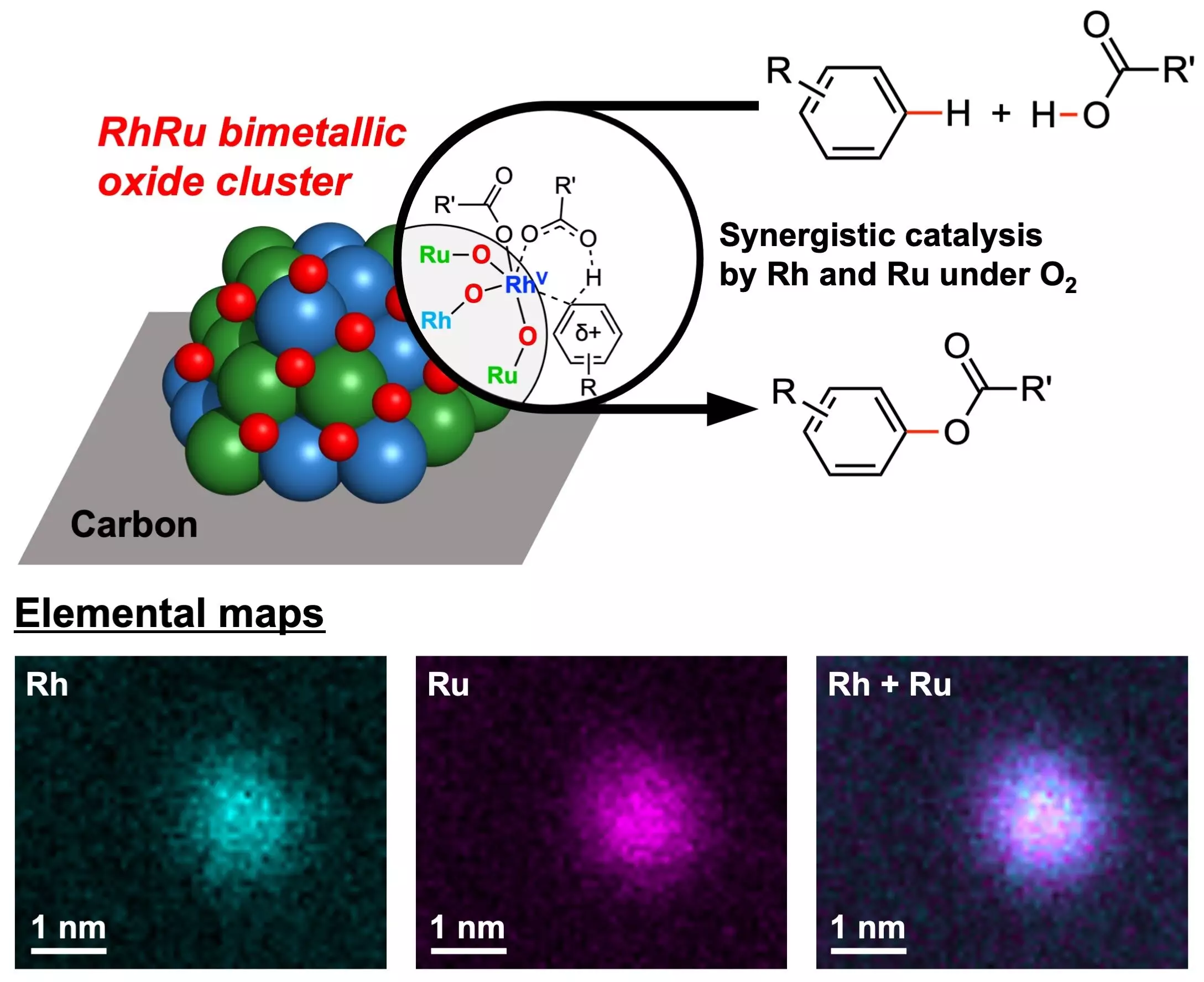In a groundbreaking development, chemists at Yokohama National University have fostered the creation of advanced catalysts that contain two noble metals. These catalysts exhibit exceptional efficiency in catalyzing ester-producing chemical reactions while relying solely on oxygen as the oxidant. This innovative technique significantly enhances the eco-friendliness and sustainability of the chemical process. Published in the Journal of the American Chemical Society on June 6, these findings are poised to revolutionize the field of chemistry, particularly in the realm of green chemistry.
The catalysts developed by the research team have paved the way for improved Cross-Dehydrogenative Coupling (CDC) reactions, a type of C-H bond activation reaction crucial in organic synthesis and industrial chemistry. These reactions hold immense promise as sustainable chemical synthesis strategies due to their atom economy, which ensures efficient utilization of reactants and minimizes waste. By harnessing the power of CDC reactions, arenes and carboxylic acids are able to form C-O bonds, leading to the direct production of aryl esters. Esters, essential compounds utilized in pharmaceuticals and polymer production, are thereby synthesized in a more environmentally friendly manner.
Traditionally, CDC reactions necessitated the use of hazardous oxidants such as hypervalent iodine reagents in conjunction with homogeneous catalysts. These oxidants pose severe risks, including toxicity to living organisms, potential explosions, and the generation of harmful byproducts. In their pursuit of a more sustainable approach, the researchers engineered RhRu bimetallic oxide clusters (RhRuOx/C) as catalysts. Comprising noble metals Rhodium (Rh) and Ruthenium (Ru) along with oxygen, these catalysts boast a minuscule mean diameter of 1.2 nm and exhibit remarkable catalytic activity in CDC reactions. Notably, they rely solely on oxygen as the oxidant, leveraging its non-toxic, abundant, and environmentally benign properties.
Employing cutting-edge imaging and spectroscopic techniques, the research team validated the structure and synthesis of the RhRu bimetallic oxide clusters. Additionally, through detailed kinetic and computational studies, the researchers deciphered the intricate reaction mechanism underlying the catalysts’ efficacy. The remarkable reactivity of these catalysts with various arenes and carboxylic acids underscores their versatility in aryl ester production. This breakthrough highlights the potential of noble-metal-based bimetallic oxide clusters in driving sustainable and efficient chemical reactions, thereby propelling the adoption of greener practices in chemical synthesis.
Looking ahead, the newfound catalysts present promising opportunities for enhancing the sustainability and efficiency of chemical reactions. The researchers are keen on exploring the utilization of these catalysts in diverse chemical processes, aiming to establish efficient and regioselective C-H functionalization reactions catalyzed by metal oxide clusters using molecular oxygen under mild conditions. This endeavor seeks to foster a more environmentally conscious approach to chemistry, promoting the advancement of greener practices and paving the way for a more sustainable future in the realm of chemical synthesis.


Leave a Reply